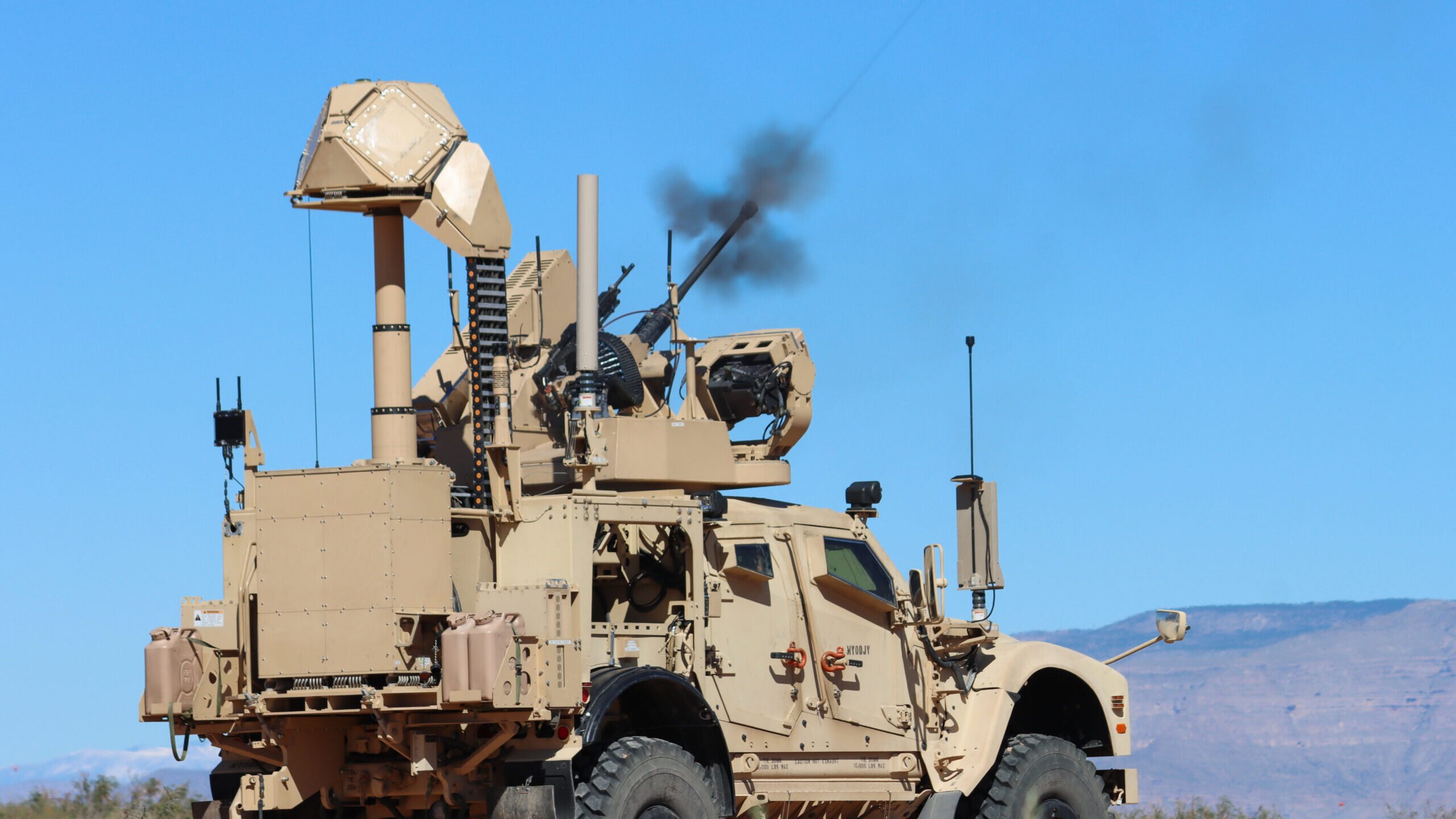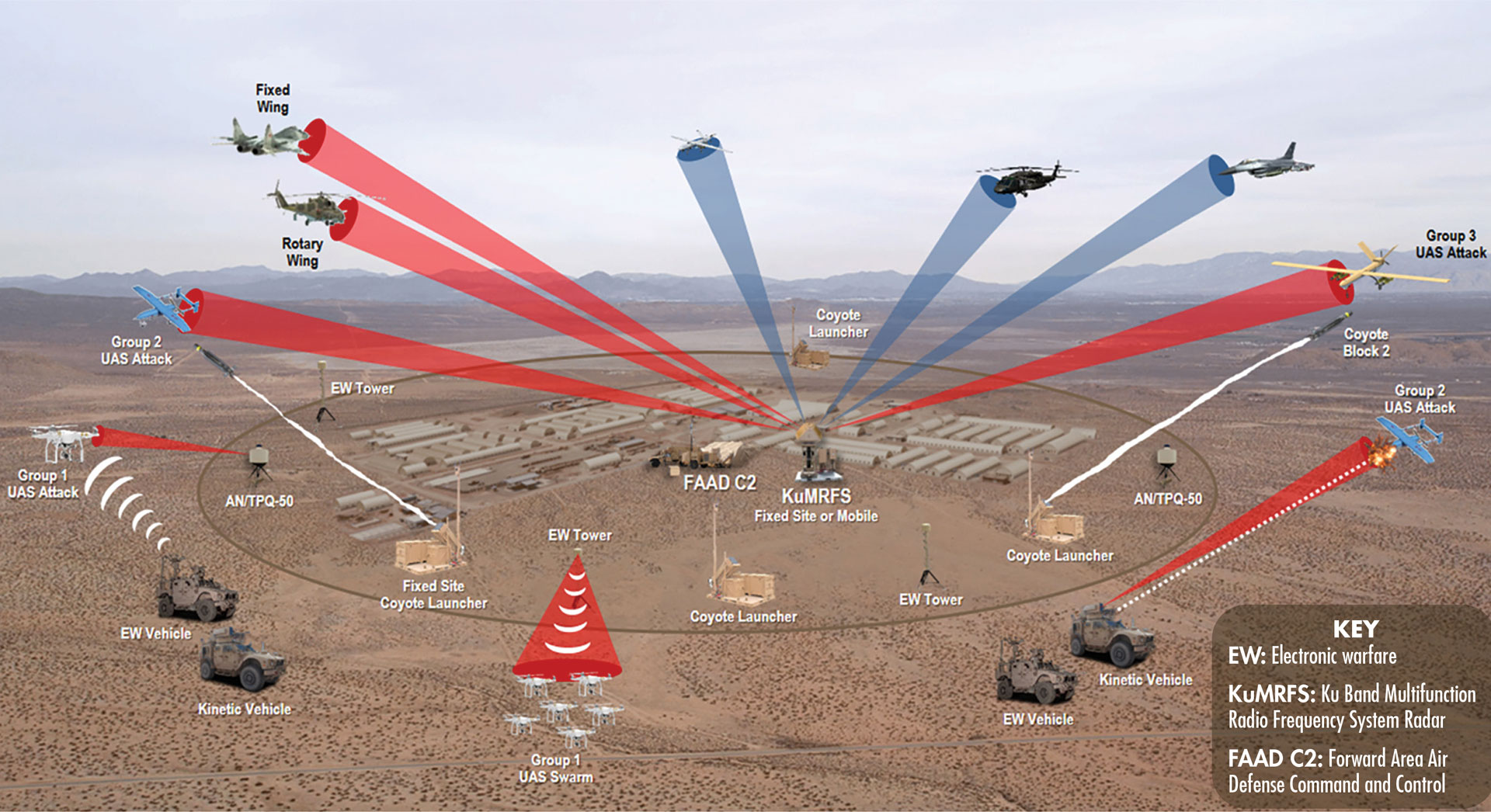
The Qatari government is interested in the fixed-site version of the Mobile Low, Slow, Small Unmanned Aerial Vehicle Integrated Defeat System shown here during a US infantry training exercise on Oct. 24, 2022. (U.S. Army National Guard photo by Spc. Everett Sharp)
WASHINGTON — The US State Department recently approved a potential $1 billion sale of counter-drone technology to Qatar, the latest evidence of keen interest in c-UAS systems in the Gulf.
The approval from the Defense Security Cooperation Agency, announced Tuesday, says Qatar seeks to buy 10 Fixed Site-Low, Slow, Small Unmanned Aircraft System Integration Defeat System of Systems, thankfully also referred to as FS-LIDS, that include 200 Coyote interceptors, electronic warfare platforms, radars and other equipment, along with US contractor support. The principle contractors for the work, DSCA said, would be Raytheon, Northrop Grumman and R&D company SRC.
“The proposed sale will improve Qatar’s ability to meet current and future threats by providing electronic and kinetic defeat capabilities against Unmanned Aircraft Systems,” DSCA said. It said the sale would support US national security interests by “helping to improve the security of a friendly country that continues to be an important force for political stability and economic progress in the Middle East.”
RELATED: State Department clears $3B in weapons sales for Egypt, Australia, Netherlands
Sales announcements are not final and represent the highest potential estimated dollar amount. Foreign military sales cases announced like these have been approved by the executive branch, and now Congress must weigh in or do nothing. Should the Hill not object, the quantities and dollar values in the deals can change during negotiations with industry.
The approval comes in the midst of Qatar’s hosting of the World Cup, an event for which it dramatically boosted security, including other counter-drone systems. More broadly, Gulf nations have expressed interest in c-UAS systems, likely influenced by the effectiveness of small drone operations in the Ukraine-Russia conflict, and the growth of Iran’s own drone fleet.
RELATED: As drone threats spread in the Gulf, TRD Singapore looking for UAE partnership
Last year the US Army’s Acquisition Support Center profiled the LIDS system, saying its “combat successes” have “generated international interest… as a deterrent to small UAS outside of traditional air defense system capabilities.” It was originally deployed to US Central Command’s area of operations in 2017, the Army said.

The LIDS family of systems uses a range of passive and active sensors to detect, track and identify UAS and non-hostile aircraft. LIDS uses a comprehensive network to communicate, allowing the operator to task appropriate mitigation techniques, ranging from electronic warfare to full physical intercepts. (Graphic by IF/RCO, U.S. Army)
The Army demonstrated the system for an international audience with representatives from 16 countries last August. The system, a complicated network of sensors, cameras, electronic warfare equipment, radios and radar, is meant to target small- to medium-sized drones that fly slower than 250 knots, or 287 miles per hour.
“Modern warfare is leading to an increasing urgency for C-UAS solutions and [the Army’s Integrated Fires/Rapid Capabilities Office] estimates significant demand for procurement of C-UAS leading to an increasing number of foreign military sales cases and foreign military funding cases in the next 10 years,” the Army in 2021.
Global interest in Iranian drones unlikely to wane despite failed attack on Israel
Though virtually none of the estimated 170 drones Iran launched at Israel got through defenses, analysts told Breaking Defense there’s an eager market globally for Tehran’s relatively cheap, normally effective UAVs.


























